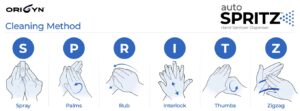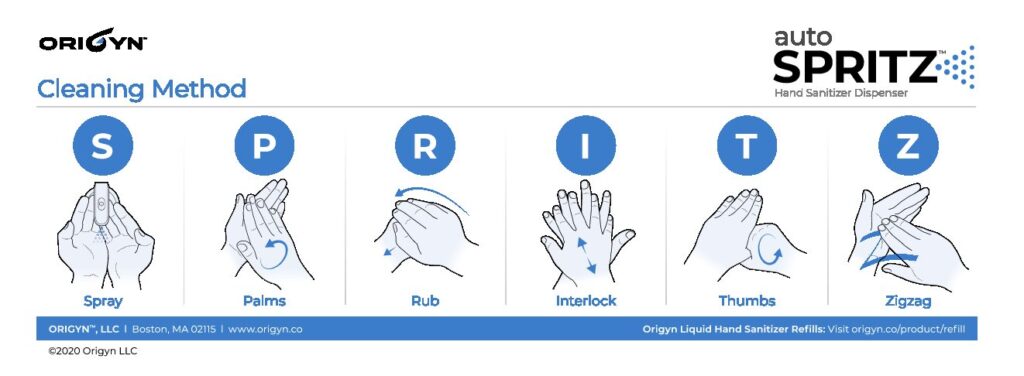 Corona. It’s taken on a much different meaning now that the COVID-19 pandemic has affected each and every one of us. A name that used to be associated with a refreshing Mexican beer that you’d slip a lime into and kick back with in a beach chair, is now associated with masks, endless amounts of hand washing, social distancing and some measure of fear. Nobody was ever afraid of Corona before (unless maybe you ran out of limes).
Corona. It’s taken on a much different meaning now that the COVID-19 pandemic has affected each and every one of us. A name that used to be associated with a refreshing Mexican beer that you’d slip a lime into and kick back with in a beach chair, is now associated with masks, endless amounts of hand washing, social distancing and some measure of fear. Nobody was ever afraid of Corona before (unless maybe you ran out of limes).
One of the most important ways to protect yourself from the coronavirus is proper hygiene. Yes, of course, showering and general cleanliness, but hand hygiene in particular. You touch SO many things over the course of your normal day. And then you touch your face, your nose, your mouth… all the places the coronavirus likes to introduce itself to your body.
Our advice? Invest in hand sanitizer, both portable dispensers and dispensers for your home or office.The Food and Drug Administration (FDA) and World Health Organization (WHO) recommend sanitizers with an alcohol content of at least 60% – anything lower just doesn’t do as good a job of killing germs. The most recommended formulation by WHO is made up of 80% ethanol.
Let’s go through a few things you may not know about hand sanitizers and hand sanitizing. Sure, you may think, “Squirt it, rub it, what else is there to know?” Trust us; there’s more to it than that.
1. I wash my hands. Isn’t that enough?
Washing your hands is the best option, yes, but it doesn’t do the entire job. All soaps are different, and your soap may not even contain the anti-bacterial agents required for proper germ killing. Sanitizing your hands with an alcohol-based sanitizer after washing your hands is by far the best and most effective method, killing 95-99.99% of germs and bacteria.
And plus, washing your hands isn’t always an option now, is it? When it’s not, it’s nice to know you’ve got some sanitizer at your disposal.
2. What is the proper way to apply hand sanitizer?
A quick squirt and rub can go a long way in killing germs, but to really get the full benefit of your sanitizer, we like the SPRITZ method from the hygiene product company Origyn:

Using the SPRITZ cleaning method with a >60% alcohol-content sanitizer is proven effective in killing 99.99% of sickness-causing germs on contact.
3. Which is better at killing germs, soap or hand sanitizer?
In terms of pure germ killing, hand sanitizer wins (assuming it’s 60% alcohol or greater). Most soaps are loaded with perfumes and fillers that just aren’t effective in killing germs. Bear in mind, most soaps are meant to clean and degrease dirty hands. And sure, antibacterial soaps like Dial do a great job of killing bacteria, but as we said before, the combination of proper hand washing PLUS proper hand sanitizing is, by far, the best overall method.
4. How often should I sanitize my hands?
The answer to this one is pretty simple: Often. You should sanitize your hands whenever you come in contact with things touched by others (stairway railings, doorknobs and handles, elevator buttons… the list goes on and on… AND ON), before and after cooking and eating, after using the bathroom, after washing your hands. After everything, basically.
Bear in mind that repeated use of hand sanitizers with a high alcohol content can dry out your skin. If this is a concern for you, look for alcohol-based sanitizers that have additives such as aloe, or use them in combination with your favorite hand lotion.
5. Do 60+% alcohol-based sanitizers kill the flu and corona viruses?
60+% alcohol-based hand sanitizers have been proven effective in killing up to 99.99% of germs and bacteria. And although studies have shown that alcohol-based sanitizers do not outright stop the transmission of diseases, they do help considerably in preventing the transmission of contagious diseases like the common cold, the flu, H1N1 and other viral and bacterial-based diseases.
Though there is no documented evidence (yet!) that these hand sanitizers kill the flu and corona viruses, their germ-killing properties certainly can’t hurt.
6. How long does hand sanitizer last?
According to thehealthy.com, “As soon as you’re done washing or using a gel, there is no residual effect. You can re-contaminate your hands right away.” So really, that makes the answer to this question “Until you touch something else that may have been in contact with germs or with others who may have germs on their hands.”
What does that mean? It means be conscious of what you touch, and wash and sanitize often.
When it comes to portable sanitizing, there are a million and one options out there. The choice is yours. But as we said, it’s best to find one with an alcohol content above 60% (preferably above 75%). Portable sanitizers are great for when you’re on the go and when hand washing isn’t an option.
For home and office, we’ve found a great new company whose hand sanitizer dispenser is zero-touch, lightweight, and pretty good looking, too. autoSPRITZ by Origyn comes with an 80% alcohol solution that’s been formulated using the WHO’s recipe for most effective germ killing. Its motion detectors deliver a targeted spritz to one or both hands. That means you never have to touch the dispenser at all to get rid of 99.99% of sickness-causing germs!
Right now, they’re selling for $49.99 and come complete with batteries, a 12oz bottle of Origyn’s Liquid Hand Sanitizer (good for about 350 sprays) and a guide for proper spritzing. The autoSPRITZ is great for your house, your kitchen, your cubicle, your porch… anywhere you want the convenience of zero-touch hand sanitizing.
We hope this article opened your eyes to some sanitizer facts you may not have known. Watch what you touch, what you touch AFTER the things you touch, and please, please, pleeeeease wash and sanitize your hands often.
Stay safe out there, people!

